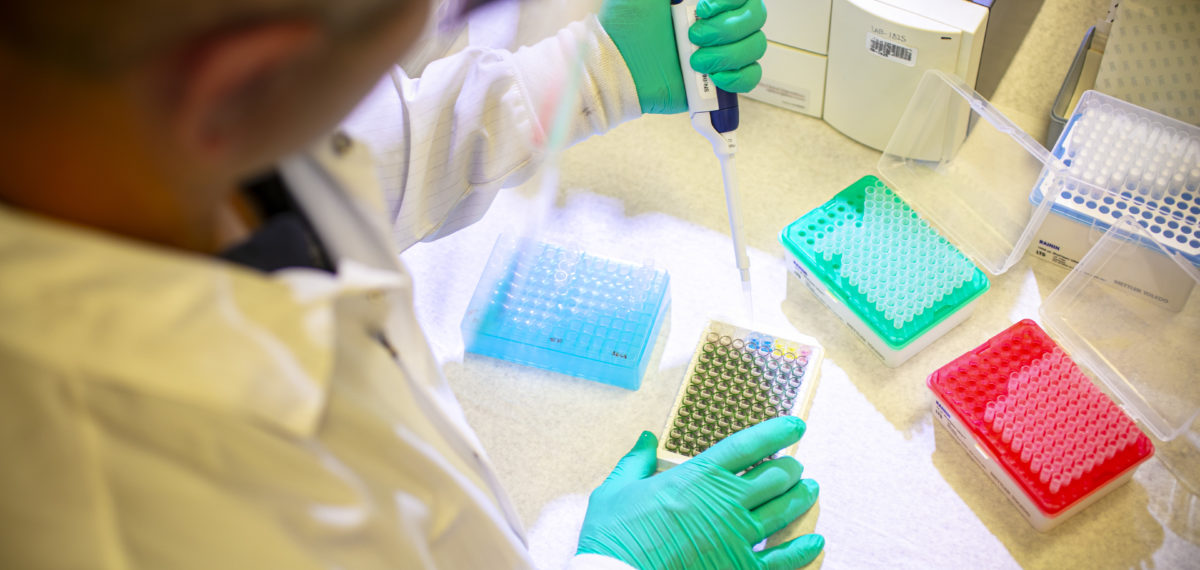
The scientists at Bloodworks Research Institute probably wouldn’t tell you they plan to change the world. In fact, it’s hard to get a scientist to agree to any absolutes. When discussing their work, they pull their punches: incremental instead of revolutionary, possible instead of certain, progress instead of cures.
So, if someone asked the number one cause of deaths worldwide, you probably wouldn’t guess blood clots. Most people would guess cancer, maybe an infectious disease like malaria. But historically, unwanted blood clots are more deadly than all cancers and infectious disease combined.
Which begs the question: If blood clots are such a problem, why haven’t you heard about it until now?
Partially, it’s because scientists are an understated bunch. But mostly, it’s because blood clots are extremely difficult to study. They are hard to predict because one can arise as a complication from almost any disease, infection, or injury. You might ask whether scientists could just target the root cause—but finding a single cure is impossible when almost anything can cause a blood clot. If all that wasn’t tough enough, clots can occurring in small veins are particularly difficult to study because they’re hard to visualize with the commonly available imaging equipment.
Despite all these obstacles, Bloodworks scientists have been tackling these issues for decades. Our teams have made Bloodworks Research Institute one of the best places in the world to study blood clots. One technique they use is to mimic veins in test tubes to study the problem in an artificial environment. This technique was revolutionary at the time, and has served our scientists well.
Now, though, we’ve gotten as far as we can artificially. It’s time to move to the real thing.
Technology has advanced our ability to look inside the human body and given us a safer way to look at live veins. With special microscopes and an ultrasound system—together we refer to them as a blood clot imaging suite—scientists are now able to see blood clots in living organisms. They’ll be able to observe how blood clots are formed and cleared within blood vessels of all sizes in real time. Access to a blood clot imaging suite would mark a huge advancement in our scientists’ ability to answer questions like “How do we prevent or slow the progression of blood clots caused by COVID-19?” and “How do we improve outcomes for patients with sepsis?”
Unfortunately for our scientists, there are no blood clot imaging suites in Washington. But Bloodworks is working to change that.
In 2022, one of our goals is to raise funds to set up a blood clot imaging suite. We envision it as a shared resource, accessible to scientists throughout Washington State. As a shared resource, we are not only elevating our own research around blood clotting, but also work at institutions like Seattle Children’s, Fred Hutch, and the University of Washington. With everyone working together, we will move the needle on how we treat the many diseases that cause these dangerous blood clots. From blood cancers to blood transfusions, this equipment will have a massive impact on medical research for years to come.
In the scientific world, technology is fundamental to progress. That means investing in the best equipment to match the Research Institute’s innovation and impact. Our scientists are ready. The technology is ready. The final piece is the financial support of the scientific philanthropic community.
And while our scientists may never claim that they are changing the world, we can all agree that their work brings us something we all need a little more of: hope. Hope for a world where science is fully funded and where preventable blood clots are a problem of the past.
Want to help? Your gifts can support our lifesaving blood clot research.
Tell Us What You Think!